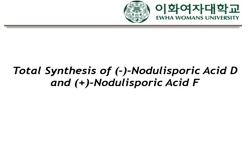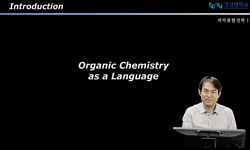Molecular sieves and zeolites are materials whose crystalline frameworks form nanometre or subnanometre pores. A variety of different crystal structures are known having a range of pore sizes. Because the pore sizes are usually smaller than 2 nm, they...
http://chineseinput.net/에서 pinyin(병음)방식으로 중국어를 변환할 수 있습니다.
변환된 중국어를 복사하여 사용하시면 됩니다.
- 中文 을 입력하시려면 zhongwen을 입력하시고 space를누르시면됩니다.
- 北京 을 입력하시려면 beijing을 입력하시고 space를 누르시면 됩니다.



Fabrication and characterization of AlPO₄-5 nanozeolites : effect of hydrothermal temperature and duration
한글로보기https://www.riss.kr/link?id=A104500237
-
저자
Ali Hassanvand (가산대학교) ; Morteza Asghari (University of Kashan)
- 발행기관
- 학술지명
- 권호사항
-
발행연도
2012
-
작성언어
English
- 주제어
-
등재정보
KCI등재,SCIE,SCOPUS
-
자료형태
학술저널
-
수록면
56-58(3쪽)
-
KCI 피인용횟수
1
- DOI식별코드
- 제공처
-
0
상세조회 -
0
다운로드
부가정보
다국어 초록 (Multilingual Abstract)
Molecular sieves and zeolites are materials whose crystalline frameworks form nanometre or subnanometre pores. A variety of different crystal structures are known having a range of pore sizes. Because the pore sizes are usually smaller than 2 nm, they are classified as microporous materials. Although microporous materials have ordered structures over the nanometre scale, they do not typically have ordered structures at larger dimensions. Crystals with a well-defined morphology and a small size distribution can be used as building blocks for generating complex structures by particle assembly techniques. Synthesis of microporous materials is usually conducted by a high temperature treatment (80-200 oC) of aqueous synthesis gels. The process of heating aqueous mixtures to elevated temperatures for crystallization is typically described as hydrothermal synthesis. The raw materials for synthesis of microporous materials include silicon and aluminum containing precursors, an organic structure directing agent (SDA), and a fluoride-containing mineralizing agent. AlPO4-5 nano-zeolite has been synthesized via a hydrothermal technique. The crystals have been structurally characterized using X-ray diffraction (XRD), a scanning electron microscope (SEM), and energy dispersive X-ray analysis (EDAX). The effect of crystallization temperature and duration on morphology of the powder have been studied
참고문헌 (Reference)
1 T.C. Bowen, 245 : 1-33, 2004
2 C. Baerlocher, "Database of Zeolite Structures" International Zeolite Association 2010
3 Ch. Baerlocher, "Atlas of Zeolite framework types" Elsevier 35-36, 2007
1 T.C. Bowen, 245 : 1-33, 2004
2 C. Baerlocher, "Database of Zeolite Structures" International Zeolite Association 2010
3 Ch. Baerlocher, "Atlas of Zeolite framework types" Elsevier 35-36, 2007
동일학술지(권/호) 다른 논문
-
Structural properties of PZT/BFO multilayer thin films
- 한양대학교 세라믹연구소
- 조서현
- 2012
- KCI등재,SCIE,SCOPUS
-
- 한양대학교 세라믹연구소
- 이주혁
- 2012
- KCI등재,SCIE,SCOPUS
-
Effect of catalysts on the yield and morphology of carbon nanotubes using a zeolite template
- 한양대학교 세라믹연구소
- Wei Zhao
- 2012
- KCI등재,SCIE,SCOPUS
-
Enhanced field emission properties of indium-doped ZnO nanorods
- 한양대학교 세라믹연구소
- M.N. Jung
- 2012
- KCI등재,SCIE,SCOPUS
분석정보
인용정보 인용지수 설명보기
학술지 이력
| 연월일 | 이력구분 | 이력상세 | 등재구분 |
|---|---|---|---|
| 2023 | 평가예정 | 해외DB학술지평가 신청대상 (해외등재 학술지 평가) | |
| 2022-10-24 | 학회명변경 | 한글명 : 세라믹연구소 -> 청정에너지연구소영문명 : Ceramic Research Institute -> Clean-Energy Research Institute |  |
| 2020-01-01 | 평가 | 등재학술지 유지 (해외등재 학술지 평가) |  |
| 2019-08-19 | 학회명변경 | 한글명 : 세라믹공정연구센터 -> 세라믹연구소영문명 : Ceramic Processing Research Center -> Ceramic Research Institute |  |
| 2011-01-01 | 평가 | 등재학술지 유지 (등재유지) |  |
| 2006-01-01 | 평가 | SCI 등재 (등재후보1차) |  |
| 2003-01-01 | 평가 | 등재후보학술지 선정 (신규평가) |  |
학술지 인용정보
| 기준연도 | WOS-KCI 통합IF(2년) | KCIF(2년) | KCIF(3년) |
|---|---|---|---|
| 2016 | 0 | 0 | 0 |
| KCIF(4년) | KCIF(5년) | 중심성지수(3년) | 즉시성지수 |
| 0 | 0 | 0 | 0 |




 KCI
KCI






